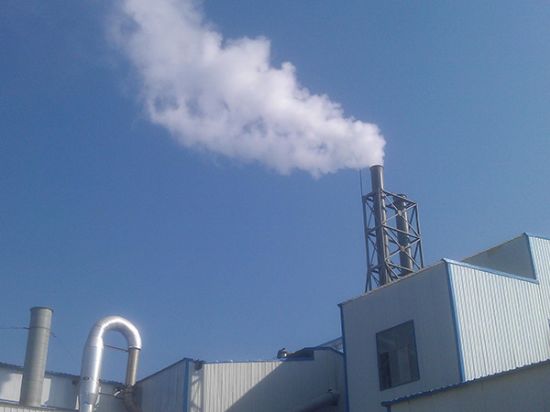Low coke FCC catalyst DYC-LC
Low Coke Level FCC Catalyst DYC-LC
重油催化裂化装置的焦炭产率高引发诸多问题:如有价值产品产率降低、再生温度升高加速催化剂水热失活、再生取热超负荷迫使原料进料量降低等,因此催化剂生焦率一直是炼厂和催化剂生产商十分关注的问题。
High yield of coke in RFCC unit may lead to several problems, such as the yield of high value products will drop, increase of regeneration temperature will accelerate the hydrothermal deactivation of catalyst, and overload of regenerative catalyst cooler will reduce the feed quantity of raw material. Hence, refiners and catalyst makers have always attached great importance to coke yield
一般认为,催化裂化催化剂上沉积的焦炭有四种来源:(1)催化焦:裂化反应过程中生成的焦炭;(2)可汽提焦:汽提不完全而残留在催化剂上的重质烃类;(3)污染焦:原料中重金属沉积在催化剂表面上,引起脱氢和缩合反应而产生的焦;(4)附加炭:原料中残炭和生焦前身物(稠环芳烃)未转化而直接成焦。这几种生焦来源虽涵盖了原料和装置设计的因素,但均与催化剂性质密切相关。例如重油催化裂化催化剂为提高重油转化能力而添加活性基质材料,但是这种基质催化脱氢、缩合等非选择性反应使得干气和焦炭产率增加。
In general, four types of deposited coke are identified in FCC Catalysts: (1) Catalytic coke - from condensation and dehydrogenation in catalytic cracking reactions. (2) Catalyst-to-oil coke - hydrocarbons entrained in catalyst pores and not removed by the stripper. (3) Contaminant coke - from dehydrogenation and condensation catalyzed by contaminant metal. (4) Additive coke — from unconverted heavy molecules (including residual carbon and the precursor of coke like polycyclic aromatic hydrocarbons) already presented in the feed. Besides the feed and design of units, all these types of coke formation are closely related to the nature of catalyst. For example, active matrix material is added in RFCC catalyst to enhance heavy oil conversion. However, non-selective reactions on this matrix, such as dehydrogenation and condensation, will increase dry gas and coke yield.
山东多友科技有限公司在自身特有的DYC技术平台基础上,通过深入的催化剂构效研究,开发了同时降低焦炭和油浆产率的DYC-LC系列催化剂。
Shandong Duo You Technology Co. Ltd., based on its own proprietary DYC Technology Platform, has developed DYC-LC series catalysts with lower coke and slurry yield through intensive effort on studying structure-activity relationship of FCC catalyst.
1、DYC-LC催化剂的物化性能指标。
1、Physical-chemical Specification of DYC-LC Catalyst
表1 DYC-LC催化剂的物化性能质量指标
Table 1 Physical-chemical Specification of DYC-LC Catalyst

*催化剂经800oC、100%水蒸气条件下老化;标准轻柴油进料,460℃反应。
*Catalyst steamed under 800oC/100% steam; standard light diesel feed, cracking temperature 460℃.
2. ACE催化裂化性能评价
2、Catalytic Cracking Results of DYC- LC Catalyst on ACE
采用从美国引进的ACE小型固定流化床催化裂化评价装置,利用国内具有代表性的M100催化裂化原料油作为评价原料,对DYC-LC催化剂和国内常用的一种催化剂进行了重油催化裂化反应评价,由于ACE评价装置的评价结果与工业实际应用结果比较接近,所得的产物分布评价结果可以作为选剂的参考。原料油性质和催化裂化反应评价结果分别见表2和表3。
Taking M100 as a representative catalytic cracking feedstock, performance of DYC-LC and domestic competitive catalyst was tested on ACE fixed fluidized bed introduced from America. Because the results from ACE are very similar to the industrial application results, product distribution of ACE results can be used as a selection agent reference. The feedstock properties and tested results are shown in Table 2 and Table 3.
表 2 M100原料油性质
Table 2 Properties of M100 Feedstock

从表2结果看,该M100原料油的氢含量低、饱和烃低、芳烃和胶质高、重金属和碱性氮高,是一种比较难裂解的催化原料油。
As shown in table 2, the M100 feedstock contains low hydrogen and saturated hydrocarbons, high aromatics and resins, high contaminant metals and basic nitrogen, and is a feedstock which is hard to crack.
表3 ACE催化裂化评价结果
Table 3 Results of DYC-LC Catalyst on ACE Unit

*催化剂经100%水蒸汽,17小时,800℃老化处理;
*Catalyst steamed at 800℃/100% steam/17h;
Table 3 shows that under the same reaction conditions, compared with competitive FCC catalyst, heavy oil conversion for DYC-LC catalyst is 0.87% higher, coke yield is 1.52% lower, gasoline+LCO yield and LPG+gasoline+LCO yield is 1.34% and 2.22% higher respectively, while bottoms yield is 0.51% lower. The results show clearly that DYC-LC catalyst has better performance on both coke selectivity and bottoms cracking.
上述结果表明:DYC-LC催化剂不仅具有优良的降焦炭性能,而且具有很好的重油裂解能力。
Based on the results above, the following observations can be made: DYC-LC catalyst combines not only lower coke selectivity but also higher heavy oil conversion.
| 下一条:Residue catalytic cracking catalyst DYC-01 |









